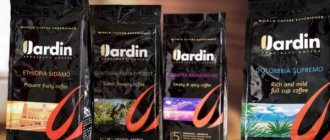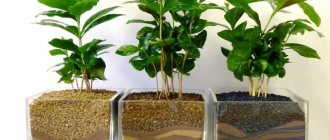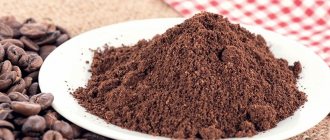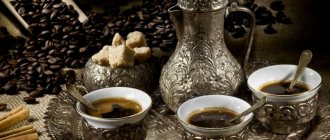Start from the center
The design of this tool is made in such a way that we start working with it in the center and gradually move to the outer circle. For example, when tasting coffee from Colombia, you may find fruity tones in it. After going through the “fruity” part of the Wheel, you are faced with a choice: is this fruitiness reminiscent of berries, dried fruit, citrus fruits, or something else? If you decide that the acidity is not so pronounced in favor of sweetness, can you assess that this taste is reminiscent of dried fruits?
Having identified the taste, we can return back to the center and start all over again, exploring one taste after another until we feel that the description of coffee is complete. This is the main function of the Wheel and it is very simple to use at this level. However, the Wheel is capable of more, and one can go much further in analysis. For example, complementing the description with the feeling of density (texture) of the drink.
The taste of coffee and its ability to give vigor, of course, does not depend on the name written on the pack, but on what altitude and in what climate the coffee trees grow. Beans from Kenya, Colombia, Guatemala, Sumatra, after roasting and brewing, produce coffee that varies in strength and aroma. What do they have in common and what are their differences? Let's consider the characteristics of continents and countries.
Africa
The nature of this continent gave the world coffee trees; they are now grown in three dozen African countries. But the most famous producing countries are in the eastern and southern parts of the continent. Due to the wide range of climatic conditions, coffee from Africa is a variety of flavor variations, the basis of which is: • richness; • a large number of citrus notes; • fruit and berry undertones.
Ethiopia
You can talk endlessly about the homeland of coffee! The dry heat of this land is best for developing the rich flavor of the beans. It is here that varieties are obtained that have no equal in quality in the whole world. Why selection here? Nature itself provides everything you need: up to 60% of the crop grows on wild bushes and trees.
Features of Ethiopian coffee:
• complex combination of flavors; • strong aroma, literally dizzying; • the sweetness of tropical fruits or wine.
The most popular varieties from Ethiopia are:
Yirgacheff
The plantations where it is grown are worthy of the title of record holders, they are so high. The dense beans of this variety produce a drink with delightful notes of flowers, with which the spirit of warm spices is intertwined. The acidity is apple-like, and the bitterness is barely noticeable and adds a piquancy. This variety is rightfully the pride of Ethiopian farmers.
Guji
Guji is characterized by high strength, but at the same time it is the softest in taste among strong varieties; its creamy bouquet is difficult to confuse with anything else. A cup of this coffee spreads a blueberry-cherry aroma, in which caraway and currant components are clearly visible, shaded with nutmeg. The taste is chocolate with a berry filling that is more sour than the aroma. Acidity ranges from blackberry to malic. The aftertaste reveals an unexpected side: a combination of pomegranate sourness and the aroma of cookies with chocolate appears.
Uganda
This small country is located southwest of Ethiopia. The most popular among Ugandan plantations are those located on the slopes of the extinct Elgon volcano. Its flat top rises to a height of more than 4,300 meters. Arabica from its slopes is called Bugisu, this variety is washed. Bugisu's bouquet is fruit and bitterness combined with moderate strength. The honey aroma is complemented by the taste of pomegranate peels and late flowers. Chocolate sweetness mixes with the sweetness of blueberry pastries, and the moderate sourness of red wild berries is revealed only in the aftertaste.
Kenya
Kenyan farmers are renowned for their commitment to strict tree growing and harvesting standards. This was partly due to the fact that coffee came here only at the end of the 19th century and the traditions of working with it were formed under the influence of high-tech techniques. But for the most part, this is a consequence of the great love of Kenyans for their work and pride in their country. They have something to be proud of - a quarter of Kenya's total exports come from coffee. Kenya Arabica has the most complex flavor of any coffee. This taste is rich, characterized by excellent balance and multifaceted acidity. It is for the sour notes that Arabica is valued. Traditionally, the more complex and varied the combination of sours, the higher the price. Kenya produces both dry and washed Arabica beans. • Dry: Dry Kenya is the standard of natural processing. Its aroma is red pepper mixed with chocolate, to which papaya, pineapple and other tropical fruits are added. There are more than a dozen shades of taste: red and orange fruits (in particular persimmon, apple), candied fruits, gooseberries, cinnamon and so on. The taste itself is dense and juicy, tangerine, and at the same time silky. The aftertaste is hot baked apples flavored with vanilla. • Washed: The aroma of washed Kenyan coffee is a mixture of spices with a hint of mint, as well as hints of caramel and blackberry. And the berry theme continues in the taste, with the addition of dried fruits and the juiciness of ripe apples. The body is creamy, very dense. The aftertaste of this coffee is like grandma’s pastries, light as a cirrus cloud and long as a northern sunset.
Central America
The flavor of the coffee beans here is shaped by a combination of hot, humid climate, high altitudes and volcanic soils. This is why most of the specialty harvest grows here. Features of the drink made from grains from this region: • Extremely balanced taste. • Medium or pronounced bitterness. • Pronounced sweetness bordering on spiciness and medium rich chocolate. • Pronounced acidity, tending towards sour citrus fruits, yellow fruits, moderate red berries. Each country in this coffee region has its own climate and topography, which affect the taste of the drink, so we will take an excursion from south to north and get to know the producing countries better.
Brazil
This country has held the championship in the amount of coffee exported for a century and a half. According to statistics, every third cup of coffee on any continent contains Brazilian beans. This gave rise to the myth that coffee trees appeared on the territory of this country. Of course, this is not true, because the birthplace of coffee is Ethiopia. Brazilian trees are hardy because they have to grow in a variable climate, where droughts and hurricanes occur in the summer, and frosts and hail are frequent in the winter. The plantations are located at low altitudes. This country cannot boast of mountains; the largest mountain reaches only 3014 meters. Therefore, Brazilian varieties lack sourness, but have pronounced bitterness. There is not enough water to process the berries, so the crop languishes in the sun for two weeks until the last moisture leaves the pulp. This gives the drink a special density. To improve the taste, several varieties are usually mixed, achieving a balance of shades. In general, gourmets consider Brazilian varieties primitive, since their taste does not have the variety of shades that acidity brings. It is based on nutty shades and notes of cocoa. However, the amount of caffeine in these beans is such that the drink makes even those who sleep for four hours for the sixth day look alert. Another advantage of Brazilian coffee is its price.
Colombia
Brazil's northwestern neighbor ranks second among coffee exporting countries. Almost 40% of adult Colombians are somehow connected with coffee farms, which are located in the mountainous part of the country. Due to the nature of the terrain, these farms are small family farms that take a careful approach to berry picking. Only Arabica beans are grown here, and the berries are processed only wet. The state of Narino, which is located in the south, is considered to be the supplier of the highest quality coffee in this country. The mountain climate gives the beans a velvety taste, which contains a flair of fruity shades, restrained bitterness, and moderate sourness. Colombian coffee can be unmistakably identified by the harmony of taste and aroma. They flow into each other, creating a single composition. The acidity of Colombian coffee is definitely malic. A drink with a pronounced sweetness, reminiscent of maple syrup, with pineapple and pear notes.
Costa Rica
A small picturesque mountainous country that is proud of its nature reserves (more than seven dozen), marvelously beautiful rivers and coffee. In the subequatorial climate, it rains over the forests for eight months of the year, and the average daily temperature in winter is +23 C. This is the only country whose nature ideally suits the requirements for growing Arabica. This is what residents do with pleasure. The taste of Costa Rican coffee is delicate, but at the same time it has a rich palette of shades. It combines the acidity of white grapes, bready notes, the aroma of blackberries and other berries, and the bitterness goes towards dark chocolate. The peculiarity of this Arabica is a small percentage of caffeine, which makes it valuable for those who do not want to drink strong varieties.
Salvador
El Salvador is a country of volcanoes. The youngest and most active of them, Izalko, received the nickname “lighthouse” because in the dark the light above the vent is visible many miles from the shore. The plateau, fertilized by volcanic emissions, became a place for growing coffee. It's inferior to brands like Colombian or Brazilian coffee, but Salvadoran Arabica is great for breakfast. It invigorates and is memorable with its delicate taste. The basis of the bouquet is dual - it is tenderness and strength. The body is dense and creamy. The peculiarity of this Arabica is that it is slightly knitting. The bitterness is from almond or apricot kernel, and the sweetness is from cocoa. The taste is dominated by dark chocolate, shaded with nutmeg. Soft acidity: honeysuckle, apple. The bouquet is completed by an aftertaste with a hint of jasmine and the bitterness of classic chocolate.
Honduras
Until the 70s. During the 20th century, Honduras exported bananas, tobacco and fruits. But when coffee harvests in South America became unstable, the government began to wonder whether it should get serious about exporting the coffee that had been grown here for more than a hundred years. Most of the territory is plateau, so there is no shortage of places for coffee plantations. Of particular value are SHG varieties that are grown at altitudes above 1500 meters. There is enough rain over the mountains, so the traditional method of processing is wet. Arabica from Honduras has more bitterness than Colombian and bright, fruity acidity. The taste of the drink is soft chocolate, with a muted wine tint and watermelon, cherry, and currant notes. Some might say it’s inexpressive, but it’s an ideal base for blends. Monosorts from Honduras are rare, but blends based on them are something worth trying.
Guatemala
More than half of the country's territory falls on the Cordillera ranges. On their slopes, coffee is grown, the taste of which contains unique shades, for example, orange blossom. And the smoky note won the hearts of gourmets. Moderate malic acidity. The bouquet is dominated by chocolate, caramel, vanilla and spicy shades.
Indonesia
A variety of varieties are grown in this region, many of which have managed to gain a worthy place in the world market. Specialty is rarely found here, but there are enough grains that give unusual shades. For example, varieties with vegetable notes are not found anywhere else. In general, Indonesian coffee is characterized by low acidity and a predominance of bitterness, often with an astringent taste and nutty undertones. Special notes: wood, smoke, spices and herbs. These drinks go perfectly with chocolate desserts.
Sumatra
Geographically, it is an island that is divided almost in half by the equator. Smooth hot climate, plenty of rain and picturesque mountains. What else is needed to grow coffee? Coffee from Sumatra has a multifaceted taste. It is composed of deep acidity and hints of wood and spice. It is noteworthy that the acidity varies from grapefruit to apple, but it is not clearly dominant. It is complemented by nutty undertones, moderate bitterness and citrus shades. Enveloping body. The aroma is also nutty with hints of flowers. Note! We have described the classic norms for each country. But! Coffee trees are living and the taste of their beans is influenced by everything: the amount of rain in the current year, temperature, degree of roasting, etc. Even your mood matters. 
Landmarks by region:
Indonesia - low acidity, unusual shades: spicy, vegetable, nutty. Coffee America - bright or absent acidity, characterized by chocolate, fruit, and berry notes. Africa - a balance of taste and aroma with hints of wine and flowers, combines shades of baking, spices, almonds, berry and fruit flavors.
Table of taste descriptors
| A COUNTRY | Nuts | Chocolate | Spices | Fruits, berries | Flowers | Bakery | Smoke |
| Ethiopia Yirgacheff | ✔️ | ✔️ | ✔️ | ✔️ | |||
| Uganda | ✔️ | ✔️ | ✔️ | ✔️ | |||
| Kenya washed | ✔️ | ✔️ | ✔️ | ✔️ | |||
| Brazil | ✔️ | ✔️ | ✔️ | ||||
| Colombia | ✔️ | ✔️ | ✔️ | ||||
| Costa Rica | ✔️ | ✔️ | ✔️ | ||||
| Salvador | ✔️ | ✔️ | ✔️ | ✔️ | ✔️ | ||
| Honduras | ✔️ | ✔️ | ✔️ | ||||
| Guatemala | ✔️ | ✔️ | ✔️ | ✔️ | ✔️ | ||
| Sumatra | ✔️ | ✔️ | ✔️ | ✔️ | ✔️ | ✔️ |
Which coffee do you like best? We welcome your comments!
Comments
Find out what we don't know yet
It is likely that some descriptors will be unfamiliar and unclear; this is absolutely normal. Many berries and fruits can be purchased at a supermarket or online store. But what about such “oil” or “malt”? — In the previous article about fragrances, we already wrote about special sets of fragrances like “Le Nez du Cafe”, which contain small jars of fragrances. They help you train in identifying the aromas in coffee, because this set comes with a whole book describing the aromas that exist in it, as well as the combinations to recreate even such unusual aromas.
CHOOSE GOOD COFFEE RIGHT
Choosing the right good coffee can take time and you need to have an idea of the labeling on the packages, the appearance of the coffee beans and other points. When visiting various Internet portals or stores with a large assortment of coffee, it is easy to get confused in the symbols on the packages, the decoding of which is not known to everyone. You can use the help of a specialist or independently familiarize yourself with information about the preparation of coffee raw materials - these are varieties, roasting, and grinding of coffee.
Before the cup reaches us, the coffee goes through a preparatory stage. Before grinding, coffee beans must be properly roasted. Due to different heat treatment methods, a tandem of different flavors and aromas has become available to us, and it is they that affect the taste of coffee. Next, you select the appropriate coffee to suit your taste.
Mindfulness practice
Referring to the wheel of flavors, starting with basic flavor groups and gradually moving towards specific descriptors, we:
- tasting the aroma as soon as the coffee is ground
- let's start cooking
- we pay attention to the aroma both at the pre-wetting stage (the brewing stage that precedes the spilling of the bulk of the water) and to the aroma during brewing
Even in these preparatory moments, you can feel the descriptors, which will later reveal themselves more clearly in the finished drink.
Types of holders
Holder maintains pressure
There are a huge number of small holes on the inside, and only one on the outside. The use of such portafilters provides a huge amount of foam.
Holder does not maintain pressure
There are many holes on the outside and inside, there is a narrow foam in the cup of the finished drink.
With and without bottom
Both types of portafilters can be bottomed or bottomless.
photo from the website ruscoffee.ru, holder without bottom
A portafilter without a bottom helps produce more fragrant and stronger coffee, since if it is installed, the drink has virtually no contact with the metal.
But the quality of the finished drink depends not only on the presence of a holder. They matter:
- serviceability of the coffee machine;
- coffee bean quality;
- barista skill.
There are many videos about holders on Youtube. We offer you one of these:
Holder for MARZOCCO coffee machine, two-serve.
Holder for MARZOCCO coffee machine, two-serve
Holder for coffee machine La Marzocco (LA MARZOCCO) two-serve Original rubberized handle with the LA MARZOCCO logo Original M12 bowl
To purchase a Holder for a MARZOCCO two-serve coffee machine, you can place an order on the website or call us by phone!
- +7 (913) 767-XX-XX Show number
- Novosibirsk, st. Bolshevistskaya, 121, off. 25
- https://www.coffee-trust.ru
- Mon-Fri 9:00-20:00
- Sat, Sun closed
Development of sensory memory
In addition to awareness during tasting, you need to develop taste experience. To do this, you need to try a variety of fruits and berries that were not previously part of your diet and carefully analyze the taste, try to remember it. Ideally, you should try to arrange any dishes and drinks according to tastes.
Cupping (from English to cup - professionally tasting coffee) is a widespread and often daily practice in the global professional coffee community. Cupping championships are regularly held around the world. This professional procedure can be carried out at home, which will require several glasses, a coffee grinder, a spoon and boiling water.
Types of holders for coffee makers
Before you change the cleaning part in your coffee machine, you need to figure out which coffee horn will fit your model. Usually, users do it simpler: they take out the clogged horn and take it to the store. On site, it is easier for the merchant to understand what the buyer needs. And he will offer a similar detail.
Philips Saeco coffee machine
There are various filters - for household and professional devices. Also suitable for both coffee machines.
- Brass horns. There are different diameters from 58 to 65 mm. With electric valves. This helps relieve pressure from the system. Such horns are often used in professional units. Yes, and they are suitable for household devices. Holder for coffee machine 65 mm. more powerful;
- Professional cleaners weighing up to 450 g;
- Three-way electric (solenoids). Help relieve pressure from the cooking system;
- Single bottom cones. Unable to regulate pressure. But these details are the most popular among users. Because the finished coffee has a special taste from water passed through such a filter.
Coffee with croissant
Depending on the service life, there are filters that are disposable, reusable, or permanent. The horns are always comfortable and economical, but they need to be taken out and washed frequently. Reusable ones can be taken out, washed and used a couple of times.
A coffee machine with a holder is called a filter coffee maker. Drip models also use cleaners. The water flows into them through the bean compartment and the heating element. For drip coffee machines, disposable horns are purchased. They require frequent replacement - 3-4 times a year.
Holder, portafilter, dispenser are a comfortable addition to the coffee machine.
How to recognize taste? How to understand what is happening at cupping?
“Everyone is as expert at recognizing taste as they are at recognizing faces,” says psychologist Paul Breslin , a leading researcher in the field of taste perception. “This is literally a matter of life and death.” If you eat the wrong thing, you will die.”
We instantly recognize the taste of currants, apples or bananas and must learn to describe our sensations. In coffee tastings, there is a sequence in which, for example, a participant in the Brewers Cup describes his cup in detail to the judges. Suppliers of green beans, roasters and people who professionally deal with coffee most often first study at the Coffee Quality Institute, then pass 20 exams and receive a certificate in order to understand how to correctly evaluate the quality of coffee. In this sequence, you can understand how they succeed:
COFFEE ROASTING AND WHAT TYPES OF ROASTING ARE THERE
After complete heat treatment of coffee beans, their color and, in some cases, size change. There is no generally accepted classification of the degree of roasting of coffee raw materials. Therefore, any country can use its own gradient values indicating the types of coffee roasting used. This is interesting information, we will look at it in this section.
Perhaps the most common designation method used is a scale, numbered from 1 to 5, which can be seen on any packaging of natural coffee. Sometimes, when indicating the types of coffee roasting, the following names are used:
- Viennese roast;
- French;
- Italian;
- Scandinavian;
- American;
- cinnamon;
- urban.
Before heat treatment, the skin of the coffee beans has a smooth texture and a dull olive tint. At the end of roasting, the color changes dramatically; from it you can visually determine the degree of roasting of the coffee bean and, therefore, what taste will prevail in the finished drink.
Viennese roasting of coffee - with it, the beans also become bright brown with a surface covered with an oil film. During the roasting process, smoke comes from the coffee beans and they “shoot.” The finished drink has light acidity and a slightly sweet taste. Remnants of the aroma are still perceptible, but the bitter notes are already present. Quite often, beans that have undergone Viennese roasting are used to make espresso coffee.
French roasting of coffee is perhaps the most common and popular method of preparing coffee. French roasting of coffee gives the beans a peculiar shine, and the drink becomes a rich brown color. Frying is carried out upon completion of the “second crack” - click. Freshly brewed coffee has the rich flavor of well-processed beans and a thick consistency.
Italian coffee roasting involves the highest degree of temperature exposure on the beans, as a result of which the beans become almost black in color. During the process of intense roasting of coffee, the most valuable oil compositions and the unique aroma of the drink are lost. Which, however, does not detract from its advantages when preparing various coffee drinks.
When the Scandinavian roasting method , the beans swell and take on a light brown color. The finished drink has a strong and at the same time light coffee aroma and a pleasant taste.
American coffee roasting – if we are talking about types of coffee roasting, then this is the fastest way. The heat treatment of coffee beans is considered complete after the “first crack” - (a soft click that is characteristic after the evaporation of gases). During the roasting process, the grain becomes visually larger and acquires a deep brown color, the stage of sugar decomposition passes into crystallization, and is characterized by quite strong acidity.
Cinnamon or, as it is also called “light” roasting , is a thermal process in which coffee beans are processed until “one first click”. Roasted coffee beans become light brown in color with a matte tint, but their structure becomes dry and does not have a glossy shine. The finished freshly brewed drink contains a refined taste of coffee with a tart tint and a slightly noticeable, pleasant sourness.
Urban “medium” roasting of coffee involves heat treating the beans until they acquire a rich brown color. This type of roasting releases oils onto the surface that add a glossy appearance to the roasted beans. With medium roast, most of the natural characteristics of the drink are well preserved - an expressive aroma, “caramel” sweetness and a long, caressingly pleasant aftertaste.
The nature of acidity and its intensity
Acidity is most often confused with sour taste. This is not entirely true - acidity emphasizes the high quality of the drink. Assess when the coffee has cooled to approximately 60ºC. Pay attention to its intensity and quality. Moreover, high intensity does not imply high quality and vice versa.
Acidity can be either with positive characteristics: pure, complex, bright, juicy, soft, tartaric, sparkling, apple, phosphoric, citric. So it is with negative characteristics: caustic, flat, unripe, enzymatic, vinegary, herbaceous, sour, muted, aggressive, simple.
ROASTING DEGREE OF COFFEE BEANS
Coffee beans, their color, shades of aroma, and the presence of essential oils in the finished product are directly affected by the degree of coffee roasting. We can view the values of the degree of roasting of beans used on the packaging or determine visually if we buy coffee by weight:
- weak “light” degree of roasting;
- medium degree of roasting;
- strong or “dark” degree of roasting.
Drink body intensity (Body)
This is a characteristic of the totality of sensations on the receptors in the oral cavity that you experience when swallowing: texture (a term used to describe tactile sensations. Ranging from light, tea-like to thick and creamy), richness.
The tactile sensations of a coffee drink are formed due to oils and organic acids that are extracted during the preparation of the drink (extraction).
What does the word “strong” mean for coffee?
Strength is the concentration of a certain taste (sweet, sour, salty or bitter) or flavor mixture. Coffee is characterized mainly by its bitter taste. Therefore, the more bitter the taste of the drink, the stronger it is considered. This opinion is wrong. The body (strength) of coffee drinks is determined by the number of taste buds it irritates. From this it follows that coffee requires the presence of different tastes. Drinks made from coffee beans have sweet, sour and bitter flavors; they have virtually no salty taste.
It turns out that the more concentrated the flavors, the stronger the coffee. Of course, the richness of the aroma is an important component of the strength of the coffee, as is the richness of the extractives in the solution. The more a coffee drink is diluted with liquid, the lower its flavor strength. In this case, the amount of extractives will remain unchanged. This is how the coffee strength is adjusted.
General impression
Defects are bad tastes in the cup. For example, earthy, moldy, burlap-like chemical and other unpleasant descriptors can often be heard in commercial coffee. To thoroughly check for defects, the same coffee is brewed in 5 cups.
Only through the assessment of taste are interesting flavor “notes” discovered, but also their combinations with each other or possible defects. After all, understanding what we feel in the taste of coffee is important not only for professionals.
Content
Principle of use.
Ground coffee is placed in the portafilter, after which the grinding is tamped with a tamper, then the horn is placed in the group of the coffee machine.
Design.
The holder is an iron basket with a handle. An iron filter (sieve) with small, moderate holes is inserted into the basket. The sieve, like the holder, can be double or single (for one or one serving of coffee). At the bottom of the holder basket there is a spout (or watering can). There can be one or two spouts, depending on whether there is a single holder or a double one.
In most cases, holders are made of brass and coated with a protective layer of chrome. The handle can be covered with a layer of plastic, rubber, wood, or simply be made of iron.
Systematization.
Portafilters come in two types: with a bottom and without a bottom, and they, in turn, are divided into pressure-supporting and non-pressure-supporting. Nacked Filter Holder (or Botomless Holder) - the so-called “leaky” holder is a type of horn that does not have a spout (watering can). These holders have no bottom.
Holders with and without pressure support differ on the outside: on the inside there are a huge number of small holes, and on the outside there is either one (pressure-supporting) or many (non-pressure-supporting). The presence of holes affects the presence of foam: under extreme pressure, there will be a lot of foam in a cup of coffee; under normal pressure, there will be less.
How to choose a suitable holder for a coffee machine.
In order to choose the right holder for a Vitek or Gaggia, Bork, MCE, etc. coffee machine, it is important to understand what functions this part does and how it looks. In principle, the holder for the Saeco coffee machine and others is the same horn, in other words, a removable part that has a filter, coffee is usually poured into it or a disc is placed, and water under pressure passes through it and already brewed coffee gets into the cup.
COFFEE ROASTING: TECHNOLOGIES, TYPES AND METHODS OF ROASTING
Let's look at another type that classifies coffee roasting. It depends on the technologies used. We will describe it for a more complete picture characterizing such a stage of raw material processing as coffee roasting. Today, enterprises use the following technological types of processing and roasting:
THERMAL ROASTING. This roasting method uses a specialized mechanism, which is equipped with a huge drum; it can hold up to two tons of raw materials. During continuous rotation, air heated to 200°C enters it. Thanks to this technology, coffee beans are evenly roasted, evaporating any foreign impurities.
DIELECTRIC COFFEE ROASTING. The process itself is similar to the problem statement for microwave ovens: exposure to superfrequency waves helps roast coffee inside. The thermal effect on grains is minimized. As a result, the ground raw materials will have a uniform taste. This is the most practical type of heat treatment of the product.
INFRARED HEAT TREATMENT. This method involves the use of a programmed machine that maintains a set temperature. The result of this treatment is a significant “bloating” of the grains in volume. During the process, complete combustion of foreign impurities occurs.
How to make coffee correctly
Many people think that preparing capsule coffee is very long and uncomfortable, but the procedure for brewing the drink is much simpler than you think.
Coffee capsules will allow you to enjoy an aromatic and invigorating drink in exactly a minute. You don’t have to measure out doses of coffee, because the required amount of the drink is already weighed and packaged in the capsules. Simply place the capsule in the device and press the “Start” button. After use, throw away the empty packaging and great coffee is ready. Nothing needs to be cleaned or washed except the cup.
About the capsule
A Nespresso coffee capsule is a small cone-shaped container made of aluminum, the inside is covered with a protective cling film so that the coffee does not oxidize when interacting with metal. Unlike paper and even vacuum packaging, the capsule retains the aroma of freshly ground coffee for a whole year and only then gradually begins to lose some notes.
The main Nespresso line today consists of sixteen original varieties, but the company annually releases limited edition Limited Editions and replenishes the Variations line, consisting of flavored coffee blends.
Used capsules are recycled; special service centers have been created for this, because caring for the environment is one of the main points in the Nestlé program.
INFLUENCE OF ROASTING DEGREE ON COFFEE STRENGTH
The strength of coffee does not depend on its level of roasting. Darker roasting of beans only determines the lower content of guaranine (caffeine). For example, light roast coffee beans contain 1.37% guaranine, while dark roast coffee beans contain 1.31%. You yourself can adjust the strength of the coffee according to your desire or mood, the amount of water or the amount of raw materials.
The strength of coffee depends on factors such as:
- The ratio of water and coffee;
- Type of grinding of coffee beans;
- Preferred method of preparing the drink.
As a result, the same type of coffee, depending on the degree of influence of these factors, may have differences in strength.
Medium roast coffee gives a richer color with a bitter aftertaste. A medium roast is characterized by a “second click” sound. The coffee beans release essential oils and the sugar caramelizes.
Strong degree of roasting - the taste of coffee with it has a characteristic bitterness with a nutty-chocolate aftertaste. The finished product is saturated with natural aroma, and the caffeine scale is at a high level. The grains acquire a dark brown color. A coffee drink made from such raw materials will have not only a deeply rich taste, but also an aroma.
But the highest degree of roasting of beans is used quite rarely. This kind of roasting evaporates almost all the moisture contained in the grain, due to which their solid consistency becomes thinner. Coffee brewed from such beans will be strong, with a bright and distinctive taste. However, there are quite a lot of people who like this coffee; it “invigorates” well.











